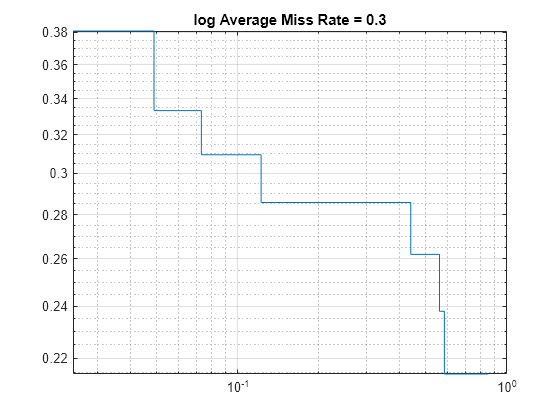evaluateDetectionMissRate
(To be removed) Evaluate miss rate metric for object detection
evaluateDetectionMissRate will be removed in a future release. Use
evaluateObjectDetection instead.
Syntax
Description
logAverageMissRate = evaluateDetectionMissRate(detectionResults,groundTruthData)detectionResults
compared to groundTruthData, which is used to measure the
performance of the object detector. For a multiclass detector, the log-average
miss rate is a vector of scores for each object class in the order specified by
groundTruthData.
[ returns data
points for plotting the log miss rate–false positives per image
(FPPI) curve, using input arguments from the previous syntax.logAverageMissRate,fppi,missRate]
= evaluateDetectionMissRate(___)
[___] = evaluateDetectionMissRate(___, specifies
the overlap threshold for assigning a detection to a ground truth
box.threshold)


